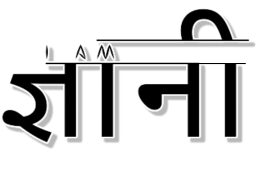Delhi has become one of the most polluted cities globally due to a combination of human activities, geographic challenges, and climatic conditions. Here’s a detailed explanation:
1. Vehicular Emissions
- Delhi has over 12 million registered vehicles, one of the highest in the world.
- Diesel-powered vehicles, heavy trucks, and older vehicles emit significant pollutants like PM2.5, PM10, and nitrogen oxides.
- Traffic congestion worsens emissions as vehicles idle for long periods.
2. Industrial Pollution
- Industrial units in and around Delhi emit large quantities of harmful gases.
- Many small-scale industries operate without proper pollution control mechanisms.
- Brick kilns, chemical factories, and power plants add to the toxic air.
3. Construction Dust
- The ongoing construction boom generates massive amounts of dust (PM10 particles).
- Unpaved roads and uncovered construction materials exacerbate the issue.
4. Stubble Burning in Neighboring States
- During October and November, farmers in Punjab, Haryana, and Uttar Pradesh burn crop stubble after harvesting.
- The smoke drifts toward Delhi, contributing significantly to air pollution.
- Combined with low wind speeds, this leads to a thick, persistent smog over the city.
5. Winter Smog and Temperature Inversions
- In winter, temperature inversions trap pollutants close to the ground.
- Calm winds and high humidity create a thick layer of smog.
- The cold weather reduces pollutant dispersion.
6. Geographic Factors
- Delhi lies in the Indo-Gangetic Plain, which naturally traps air pollutants due to its geography.
- Surrounding Aravalli Hills limit the natural ventilation of air.
7. Open Waste Burning
- Unauthorized burning of solid waste, including plastics, contributes to toxic emissions.
- Landfills like Ghazipur often catch fire, releasing gases like methane, dioxins, and other carcinogens.
8. Dependence on Fossil Fuels
- Coal-based power plants in nearby states release sulfur dioxide and particulate matter.
- Diesel generators, frequently used during power cuts, increase air pollution.
9. Firecrackers During Festivals
- Festivals like Diwali see widespread use of firecrackers, leading to a sharp spike in air pollution.
- Combined with stubble-burning smoke, this worsens Delhi’s air quality.
10. Lack of Green Cover
- Rapid urbanization has reduced Delhi’s green cover.
- Trees and vegetation, which help absorb pollutants, are insufficient to counter the city’s pollution levels.
Health Impacts
- Long-term exposure to Delhi’s polluted air causes respiratory issues, cardiovascular diseases, and even cancer.
- Children, the elderly, and individuals with pre-existing health conditions are particularly vulnerable.
Efforts to Address Pollution
- Graded Response Action Plan (GRAP): A set of measures activated based on pollution levels.
- Odd-Even Traffic Rule: A temporary car rationing scheme to reduce vehicular emissions.
- Switch to BS-VI Vehicles: Stricter emission norms for cleaner fuel usage.
- Monitoring and Bans: Regular monitoring of industrial emissions and a ban on older vehicles.
- Promoting Public Transport: Expansion of metro and bus services to reduce private vehicle usage.
Despite these measures, Delhi’s pollution problem persists due to poor enforcement, lack of coordination among states, and increasing urbanization.

